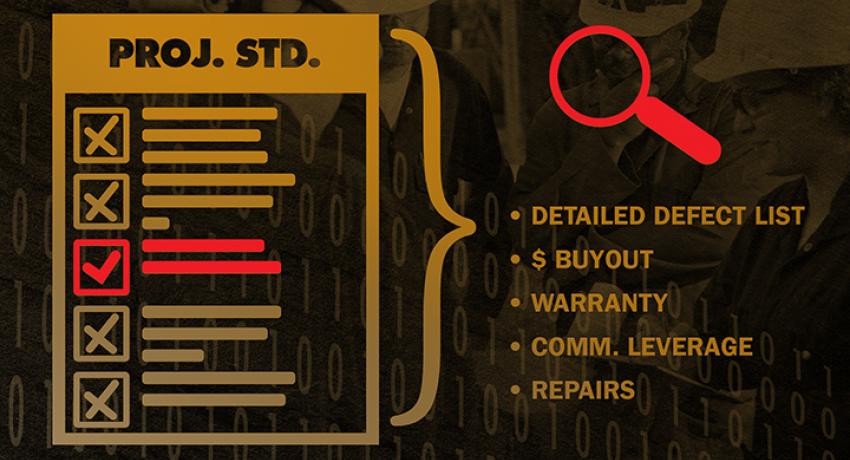Completion Punchlists are a powerful commercial tool, but typically only a partial remedy to facility deficiencies. It's better to avoid defects than to list them late in a project.
While SLATE is ideally used as a platform for continuous project improvement, unfortunately there are times when projects near completion and owners finally realize the plant quality/completeness is significantly compromised.
In these cases, SLATE can be used to perform the process of creating an itemized gap list of defects compared with the contracted standard of performance (codes, standards, specifications).
These defect lists are very powerful, because they essentially become an irrefutably documented record of every defect. The SLATE process is compelling and allows for a more straight-forward discussion with a contractor and legal counsel about various remedy options.
Such a product can be used to prompt repairs, extend warranties, increase negotiated settlement values, or combinations of outcomes favorable to an owner.
While this is a very potent tool to use in instances where plants are suspected to be materially deficient, it is not ideal. Facilities are rarely, if ever, brought back to the required standards, so there is always some compromise that leaves an owner with less than ideal circumstances to venture into initial operations.
Of course, the better approach is to use SLATE during construction to improve a contractor’s performance. This yields a better plant, manages to preserve relationships after the project is complete, and if fully engaged, lowers the contractor’s costs in the process. Making a large detailed list at the end of a project can be a very effective means to restore a degree of commercial balance, but is not ever a full remedy.
EPS and EPR are very sophisticated at creating large-scale detailed punchlists and can advise an owner as to when a project warrants this type of an approach.




